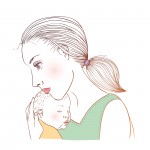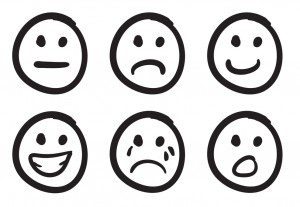
Postnatal mental health difficulties are becoming more widely recognised and acknowledged, within the community as well as academic and clinical perspectives. Based on substantial research, it is now well established that approximately 10-15% of new mothers will experience postnatal depression within the first year of having a baby. For some of these women depression may be exclusive to the postnatal period, but for others it may begin during pregnancy, or perhaps even earlier.
But do we yet have a full understanding into the factors that place some mothers at higher risk of these symptoms than others? This knowledge is vital if we are to effectively provide interventions that reduce the prevalence of mothers experiencing depressive symptoms, the severity of these symptoms, and the possible wider impact of these symptoms on the family.
This recent study by Patton and his colleagues (2015) attempts to explore the trajectory of depression from adolescence until parenthood to explore whether earlier life-time experiences of depression place women at higher risk for perinatal depression.

10-15% of new mothers will experience postnatal depression within the first year of having a baby.
Methods
The authors followed up 384 women who had previously participated in a large-scale Australian Cohort Study, and were either pregnant or had 1+ children (mean age=32 at time of first child in study). The original female participants were recruited from 45 schools across Victoria, aged approximately 15 years (n=1,000) and followed up at seven time-points throughout adolescence (aged 15-17) and into young adulthood (aged 20, 24 and 29). Depression and anxiety were assessed at each point via clinical interviews and/ or self-report questionnaires.
Those who consented to follow-up were then recruited into this next study if they responded positively to screening questions regarding pregnancy or a child under the age of one. This follow-up study aimed to explore whether a number of pre-conception factors (mental health being one) were related to maternal perinatal mental health (defined in this study as depression and anxiety in pregnancy or within the first postnatal year) and neonatal development. This paper specifically explores whether women with perinatal depression were more likely to have a history of depression and anxiety pre-conception.
Participants completed computer-assisted telephone interviews to assess for depression (EPDS, cut-off of 10) and anxiety (GHQ-12, cut-off of 3). These assessments were completed at one+ time-point in the perinatal period: 32 weeks gestation, 8 weeks and/ or 12 months postnatally. 564 pregnancies were included in the study, for the 384 mothers.
Multi-level models were used to explore associations between perinatal anxiety and/ or depression, and pre-conception mental health. Mean depression scores and frequencies were calculated based on all pregnancies in the study.
Results
Mothers with a history of anxiety or depression prior to conception (66% of the sample) were at increased risk of perinatal mental health difficulties:
- 22% of first-time mothers reported depressive symptoms at any of the perinatal assessments, and 17% of multiparous women (women with >1 child).
- Those women with a history of depression or anxiety in both adolescence and young adulthood were found to be at the highest risk for perinatal mental health difficulties: an eight-fold odds increase compared to mothers with no history of anxiety or depression.
- An episode of depression in adolescence only did not appear to increase risk for perinatal depression, whereas an episode of depression in young adulthood only did increase risk (a four-times odds increase compared to women with no history of mental health difficulties).
- A history of pre-conception mental health problems was reported in:
- 87% of mothers reporting antenatal depression
- 83% of mothers reporting depression at 8 weeks postnatally
- 91% of mothers reporting postnatal depression.
- In total, this equates to 85% of mothers with perinatal depression having also experienced anxiety or depression prior to conception.

Women with a history of depression or anxiety in both adolescence and young adulthood were found to be at the highest risk for perinatal mental health difficulties.
Strengths and weaknesses
One of the strengths of the study is the original methodology used to recruit and assess the initial large cohort of adolescent females. However, it is worth noting that eligible women who did not participate in this follow-up study reported a higher prevalence of depression in young adulthood and anxiety at age 29, suggesting the follow-up sample may actually under-represent the prevalence of mental health difficulties in the perinatal period. Women who did not participate in follow-up were also less likely to have been born in Australia, suggesting that the results may be reflective of an Australian-born Cohort.
The study used clinical interviews to measure depression at most time-points, which is a real strength and is fairly unusual in such a large-scale study. However, perinatal depression was measured using a telephone-based EPDS, which although appears to have good validity in assessing depressive symptoms, may not be as accurate as a diagnostic interview. A cut-off of 10 was used on this scale, which the authors suggest may actually under represent depressive prevalence (based on telephone methodology), despite this being lower than the typically-recommended cut-off of 12/13.
At times it is hard to follow whether the authors are referring to anxiety or depression. Both appear to have been measured at each time-point in the study; at times each is referred to specifically, whereas at other times these are referred to as ‘mental health difficulties’. The paper could have benefitted from making this clearer, and giving further consideration to anxiety as well as depression.
It would also have been helpful to be given more information about the confounding factors which were taken into account in the analyses; although the authors report these had little effect on the overall results, a clearer picture would be presented if these were discussed in more detail.

It’s possible that the results of this study under represent the true prevalence of depression and anxiety in mothers.
Conclusions and comment
The findings are very striking, and strongly suggest that women with a history of mental health difficulties prior to conception are at an increased risk for depression during pregnancy or the first postnatal year.
In particular, mental health difficulties in both adolescence and young adulthood appears to place women at the greatest risk during the perinatal period. This highlights the need for depression throughout women’s lifetime to be paid significant attention as perinatal depression not only holds implications for the mother herself, but may also detrimentally impact upon other family members.
Intervention and treatment are imperative in reducing occurrence and severity of depression across the lifetime. However, the study does not report on whether these women received treatment at any time-point for depression or anxiety, and whether this decreased their risk of further episodes, or perinatal occurrence. Further information regarding treatment history would help inform at what time-point interventions are best placed for adolescents, young adults, and new mothers.

Future research should include the patient treatment history, so that we know the best time-points to treat women at risk of perinatal mental illness.
Links
Primary paper
Patton, George C et al. (2015) Prediction of perinatal depression from adolescence and before conception (VIHCS): 20-year prospective cohort study. The Lancet , Volume 386, Issue 9996, 875-883. [PubMed abstract]

Postnatal depression: is it a unique mental health difficulty, or part of a… http://t.co/fKejpdrHej #MentalHealth http://t.co/qqw500jM1y
Fiona Ohagan is this any good for the group?
Good piece from @Jane_Iles On PND. A seperate phenomena or part of depression’s “life course”? http://t.co/zsTYFngaj8 (ht @Mental_Elf )
.@PNDandMe @DrAndyMayers Pls help us share today’s blog by @Jane_Iles on #PostnatalDepression http://t.co/ks8DSw6O9o #PND
10-15% of new mothers will experience #PostnatalDepression within the first year of having a baby http://t.co/ks8DSw6O9o #PND
@Mental_Elf #MatExp It’s why #mentalhealth services are v important as part of total care #CompleteCare
“Postnatal depression: a unique mental health difficulty, or trajectory of depression across the life-span?” http://t.co/q3frCOg9xY
New 20-year cohort study presents compelling data about risk of perinatal mental illness in new mothers http://t.co/ks8DSw6O9o
Women with perinatal depression were more likely to have a history of depression or anxiety pre-conception http://t.co/ks8DSw6O9o #PND
RT @Mental_Elf: Today @Jane_Iles blogs about “Prediction of perinatal depression from adolescence & before conception” in @TheLancet http:/…
Don’t miss: Postnatal depression-unique mental health difficulty or part of lifespan trajectory of depression? http://t.co/ks8DSw6O9o #EBP
This paper highlights once again the importance of good history taking when women start their perinatal journey – http://t.co/WbpRH4weOK
@UCLanMH
http://t.co/uj5i7cWYwH
#Postnatal depression: Unique mental health difficulty or part of depression across life-span? http://t.co/YSvpJEkZD2 via @Mental_Elf
Postnatal depression: unique difficulty or part of the life-span? http://t.co/La7N0nCEF6